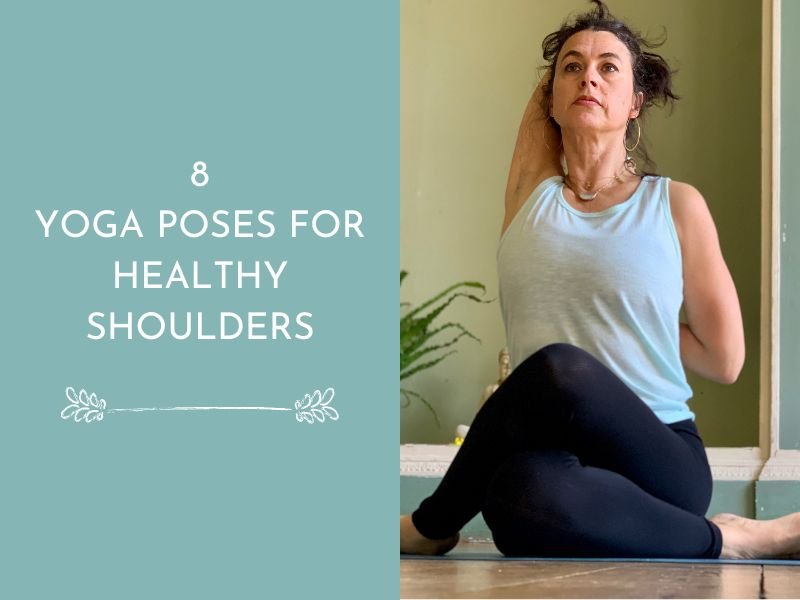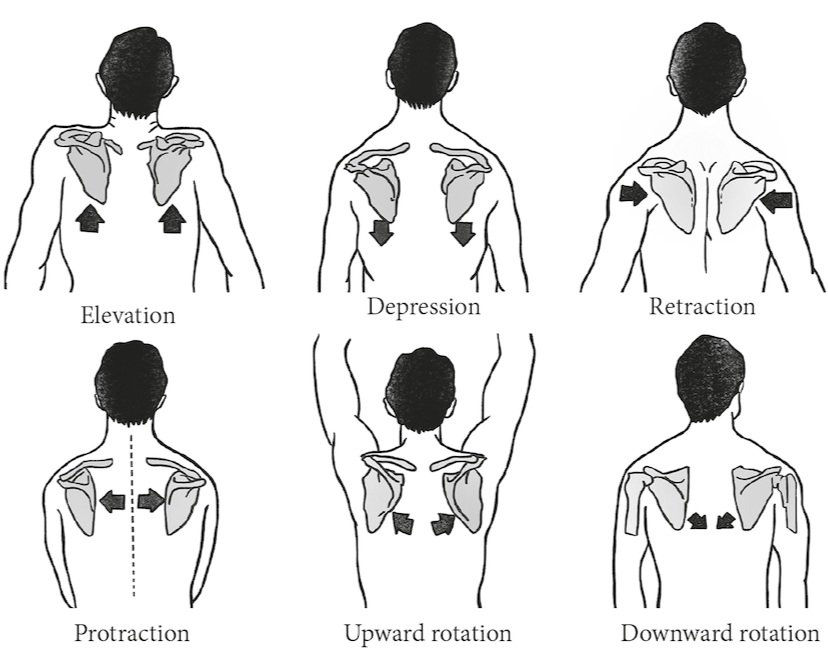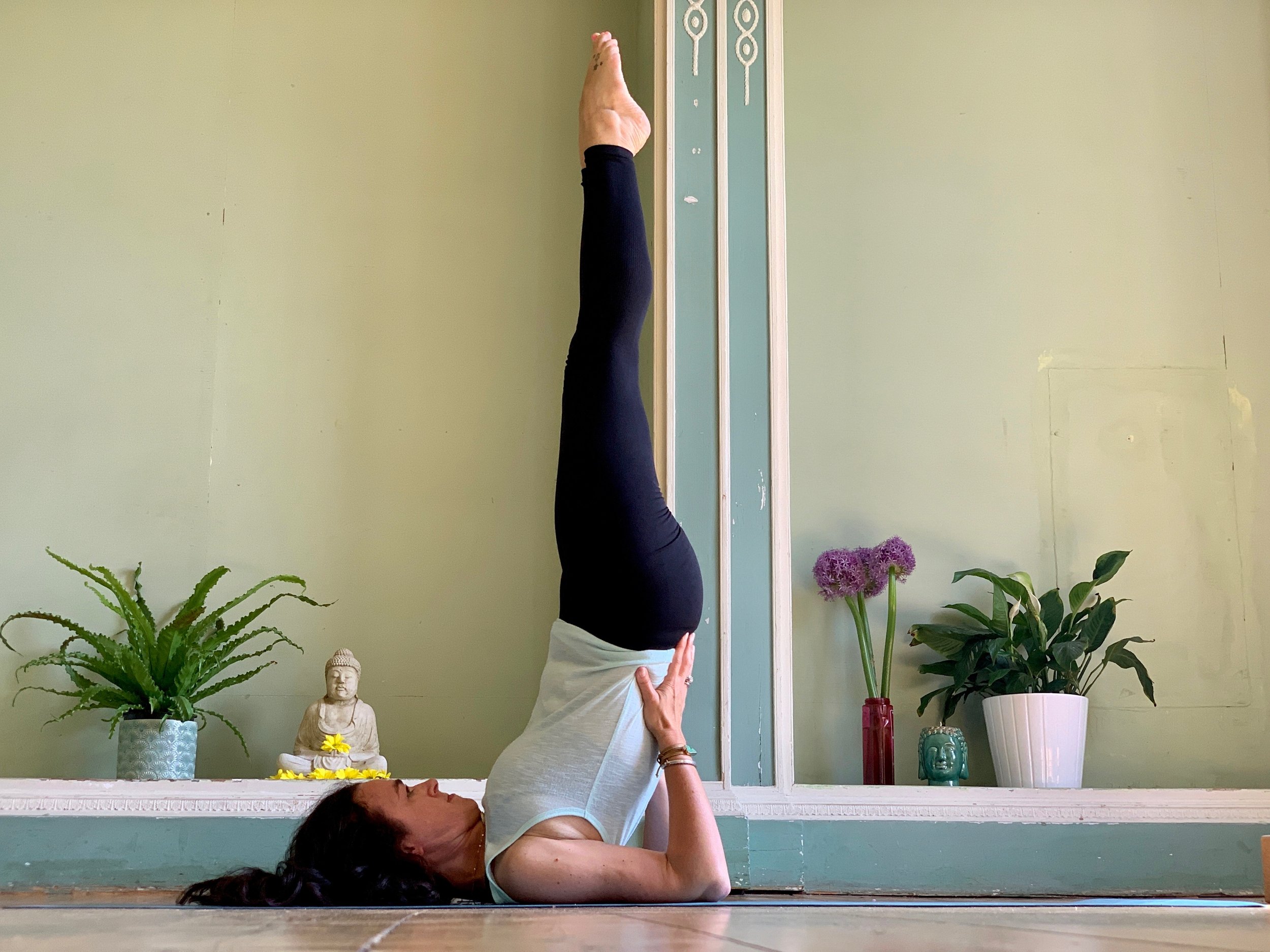8 Yoga Poses for Healthy Shoulders: Improve Mobility and Prevent Injuries
If you know me, then you’ll know I’m a huge advocate of yoga to heal all kinds of ailments, from physical fitness, to relieving stress and anxiety, to building self-confidence through the breath. So, it’s no surprise when I say that yoga is a great way to improve shoulder mobility, reduce tension and pain, and prevent injuries. And, as we get older, it’s even more important to maintain a healthy body to stay strong and resilient.
The anatomy of the shoulder
The shoulders work in a variety of ways to support our everyday movement. Let’s look at the anatomy of the shoulder girdle.
shoulder girdle movements
The shoulder is a ball and socket joint that has the greatest mobility of all our joints, and it is therefore the least stable joint in the body. Let’s take a look at everything it does:
Elevation is moving the shoulder girdle up towards the ear.
Depression is moving the shoulder girdle down away from the ear.
Protraction is drawing the scapula away from the midline of the body.
Retraction is moving the scapula towards the midline of the body.
Upward rotation describes a swinging movement roughly in the frontal plane where the lower tip of the scapula moves up and out away from the midline.
Downward rotation describes the swinging movement whereby the lower tip of the scapula moves down and towards the midline. Downward rotation of the scapula occurs as the arm is returned to the side from a raised position.
8 poses for healthy shoulders
With the anatomy lesson out of the way, lets look at these 8 yoga poses for healthy shoulders, along with their benefits, how to do them, and modifications to make them easier:
downward facing dog
1.Downward-Facing Dog (Adho Mukha Svanasana)
Benefits: This pose stretches the shoulders, arms, and upper back, while also strengthening the arms and legs.
How to do it: Start on your hands and knees, with your wrists under your shoulders and your knees under your hips. Spread your fingers wide and press your palms into the mat. Exhale and lift your knees off the mat, straightening your legs and coming into an inverted V-shape. Press your heels down toward the mat and lengthen your spine. Hold for 5-10 breaths.
Modifications: If you have tight hamstrings or lower back pain, you can bend your knees slightly and focus on lengthening your spine.
cow face pose
Back view of hands connecting
2. Cow Face Pose (Gomukhasana)
Benefits: This pose stretches the shoulders and opens the chest, while also stretching the hips and thighs.
How to do it: Start in a seated position with your legs extended in front of you. Bend your right knee and place your right foot on the floor, then cross your left leg over your right leg, bringing your left foot to the outside of your right hip. Reach your right arm up and bend your elbow, bringing your right hand down between your shoulder blades. Reach your left arm behind your back and bend your elbow, bringing your left hand up toward your right hand. Clasp your hands together if possible, or use a strap to hold onto. Hold for 5-10 breaths, then switch sides.
Modifications: If you have tight hips or knees, you can sit on a folded blanket or block to elevate your hips.
eagle pose
3. Eagle Pose (Garudasana)
Benefits: This pose strengthens and stretches the shoulders and upper back, while also improving balance and concentration.
How to do it: Start in a standing position with your feet hip-width apart. Bend your knees slightly and lift your right leg up, crossing it over your left leg. Wrap your right foot around your left calf if possible. Bring your arms out to the sides and cross your right arm over your left arm, bending your elbows and bringing your palms together if possible. Lift your elbows up and away from your face. Hold for 5-10 breaths, then switch sides.
Modifications: If you have balance issues, you can stand with your back against a wall for support.
Dolphin pose
4. Dolphin Pose (Ardha Pincha Mayurasana)
Benefits: This pose strengthens the shoulders and upper back, while also stretching the hamstrings and calves.
How to do it: Start on your hands and knees, with your wrists under your shoulders and your knees under your hips. Lower your forearms to the mat, keeping your elbows under your shoulders. Tuck your toes and lift your hips up, coming into a modified downward-facing dog. Press your forearms and palms into the mat and lengthen your spine. Hold for 5-10 breaths.
Modifications: If you have tight hamstrings or lower back pain, you can bend your knees slightly and focus on lengthening your spine.
thread the needle
5. Thread the Needle Pose (Parsva Balasana)
Benefits: This pose stretches the shoulders and upper back, while also releasing tension in the neck and spine.
How to do it: Start on your hands and knees, with your wrists under your shoulders and your knees under your hips. Reach your right arm under your left arm, threading it through the space between your left arm and left knee. Lower your right shoulder and ear to the mat and rest your right cheek on the mat. Hold for 5-10 breaths, then switch sides.
Modifications: If you have tight shoulders or neck, you can place a folded blanket or block under your head for support.
6. Puppy Pose (Uttana Shishosana)
Benefits: This pose stretches the shoulders and upper back, while also releasing tension in the neck and spine.
How to do it: Start on your hands and knees, with your wrists under your shoulders and your knees under your hips. Walk your hands forward and lower your chest toward the mat, keeping your hips over your knees. Rest your forehead on the mat and lengthen your arms. Hold for 5-10 breaths.
Modifications: If you have tight shoulders or neck, you can place a folded blanket or block under your forehead for support.
half lord of the fishes
7. Half Lord of the Fishes Pose (Ardha Matsyendrasana)
Benefits: This pose stretches the shoulders and upper back, while also improving digestion and detoxification.
How to do it: Start in a seated position with your legs extended in front of you. Bend your right knee and place your right foot on the floor, then cross your left leg over your right leg, bringing your left foot to the outside of your right hip. Place your right hand on the floor behind your back, close to your body. Inhale and lift your left arm up, then exhale and twist to the right, bringing your left elbow to the outside of your right knee. Hold for 5-10 breaths, then switch sides.
Modifications: If you have tight hips or knees, you can sit on a folded blanket or block to elevate your hips. You can also use a strap to hold onto your foot if you can't reach it with your hand.
supported shoulder stand
8. Supported Shoulderstand (Salamba Sarvangasana)
Benefits: This pose strengthens the shoulders and upper back, while also improving circulation and calming the mind.
How to do it: Start lying on your back with your arms by your sides. Lift your legs up and over your head, bringing your hips off the mat and supporting your lower back with your hands. Straighten your legs and lift them up toward the ceiling. Hold for 5-10 breaths, then slowly lower your legs back down to the mat.
Modifications: If you have neck or shoulder issues, you can place a folded blanket or block under your shoulders for support. You can also practice a modified version of the pose by keeping your legs bent and your feet on the floor.
In conclusion, these 8 yoga poses for healthy shoulders can help improve shoulder mobility, reduce tension and pain, and prevent injuries. It’s important to practice these poses mindfully and with proper alignment to avoid strain or injury. If you have any pre-existing conditions or injuries, it is recommended to consult with a healthcare professional before practicing yoga.
With regular practice, these poses can help you maintain healthy and strong shoulders for years to come.













